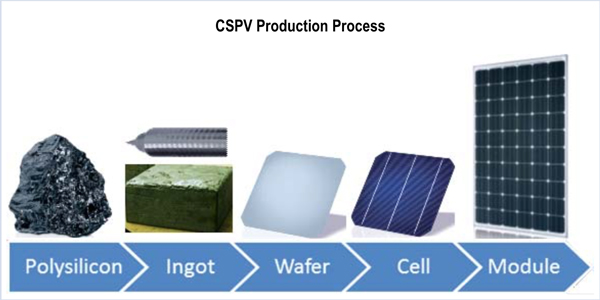By Michael Kuser
The U.S. International Trade Commission on Tuesday recommended that President Trump impose import duties as high as 35% on solar cells and modules.

USITC Building in Washington, DC | USITC
The independent panel announced the recommendations following its unanimous ruling in September that increased imports of solar cells and components are harming domestic manufacturers, which supported the claims of solar manufacturers Suniva and SolarWorld under Section 201 of the 1974 Trade Act.
The commission will forward its injury determination, remedy recommendations, any additional findings and the basis for them to Trump by Nov. 13. The president will then have 60 days to decide on what, if any, measures he will take. (See Trade Panel Rules PV Imports Hurting Domestic Manufacturers.)
Three of the four commissioners recommended imposition of tariff-rate quotas. The fourth, Meredith Broadbent, recommended that the president impose a hard annual quantitative restriction on imports of crystalline silicon photovoltaic (CSPV) products into the U.S. for a four-year period. That restriction would be set at 8.9 GW in the first year, increasing by 1.4 GW each subsequent year.
Tariffs and Quotas
Chair Rhonda Schmidtlein sought tariffs as high as 30% on imports of cells that exceed annual quotas of 0.5 GW, recommending that in-quota levels be incrementally raised and the tariff rate incrementally reduced during a four-year remedy period.
For CSPV modules, Schmidtlein recommended a 35% duty to be incrementally reduced during a four-year remedy period.

| USITC
Vice Chair David Johanson and Commissioner Irving Williamson joined in recommending measures similar to Schmidtlein’s: “For imports of CSPV products in cell form, we recommend an additional 30% ad valorem tariff on imports in excess of 1 GW. In each subsequent year, we recommend that this tariff rate decrease by 5 percentage points and that the in-quota amount increase by 0.2 GW. The rate of duty on in-quota CSPV products in cell form will remain unchanged. For imports of CSPV products in module form, we recommend an additional 30% ad valorem tariff, to be phased down by 5 percentage points per year in each of the subsequent years.”
Who to Blame?
Schmidtlein also recommended that Trump initiate international negotiations to address the underlying cause of the increase in imports of CSPV products.
Broadbent said that surging imports and a global oversupply of CSPV products resulted “from the subsidization of manufacturers in China in the context of targeted industrial policy programs. I believe the president intends to address China’s non-market economic policies that have contributed to global oversupply as part of broader bilateral negotiations with the government of China, and I support those efforts.”
She said her recommended quotas “are consistent with the market share held by imports in 2016, adjusted to reflect projected changes in demand for photovoltaic products over the next four years. Therefore, they are set at levels that will not disrupt expected growth in CSPV demand but will help address the serious injury to the domestic industry by preventing further surges in imports.”
Where the Buck Stops
Timothy Fox of ClearView Energy Partners said in a statement that the commission’s recommendations for trade remedies represent another step toward final action, not final action itself.
“We regard today’s vote as another significant step towards trade action likely to raise the cost of solar domestically, potentially blunting solar power deployment over the next four years,” Fox said, adding that Trump’s decision could be driven more by politics than by economics.
“President Trump measures economic success in terms of bilateral trade balances and manufacturing jobs,” Fox said. “This solar trade proceeding could give President Trump a way to ‘win’ on both fronts. Economic nationalism appears alive and well within the White House, including in renegotiations of the North American Free Trade Agreement and Korea-U.S. Free Trade Agreement. As such, we think this solar proceeding could serve as a prototype for future protectionist efforts, including those concerning aluminum and steel (especially steel).”



